— This is a guest article written by Andrew Lindstrom, who writes about infrastructure, transportation and urban spaces on his City Hikes blog.
TriMet has a problem, but it’s not the one you’re thinking of. Safety and rider comfort is still a big deal, and they are certainly struggling on that front – but I want to focus on a more pressing issue, the nuts and bolts of schedules and service changes. This all began with a supposed upgrade of part of the #17 to Frequent Service (“every 15 minutes or less most of the day, every day”) which resulted in no additional buses being run. It bugged me then, and it bugs me now so let’s take a look at the history, mystery, and wonder of the scheduled service on the 17-Holgate/Broadway.
To begin, we should understand what the service was back in the ancient days of 2021. The simplest way to do this is looking at the schedule, so let’s take a peek.
The first thing to note here is the total number of buses running on a given weekday – 61, with 58 making the entire trip. Second, if we look at the typical frequency during the day we see buses every 20 minutes during the afternoon, every 10 to 12 minutes during the morning peak, and every 12 to 15 minutes during the evening peak. Night service is every 30 minutes, with the final trip passing through downtown at about 12:20.
The focus on the morning peak over the evening peak is directional, since the south leg on Holgate (heading into downtown in the morning) tends to be busier than the north leg on Broadway (heading out of downtown in the evening). The “rush hour to downtown” focus is also a clear legacy of pre-Covid ridership, something TriMet has been earnest to rethink in their current batch of service changes.
Now let’s take a look at the current service pattern – remember, this is after a supposed “upgrade” to Frequent Service.
So we can see here that there are 60 total buses – one fewer than in 2021 – with just 36 making the entire trip. So how can we consider this to be “Frequent Service”? Well for starters, this is only getting that designation on the southerly leg on Holgate, so let’s focus there for now. The typical non-rush frequency during the day is up to every 15 minutes, while both the morning and evening peaks are down to the same 15 minute service. Evening service is still every 30 minutes, with the last bus going through downtown at 12:20, though it is slightly worse than before with 4 rather than 5 buses leaving downtown after 9:30 PM.


Evidently, I find the new schedule to hardly be an upgrade from the old one. It’s a net reduction in overall service, frequencies in the morning and evening rushes are worse, and the night service is slightly worse. This is not just an issue with the #17, basically all the TriMet bus routes have seen service cuts since 2020, usually just to the point of having service technically qualify as “Frequent Service”, though usually just on weekdays. Remember, the designation does in fact say “every day”!
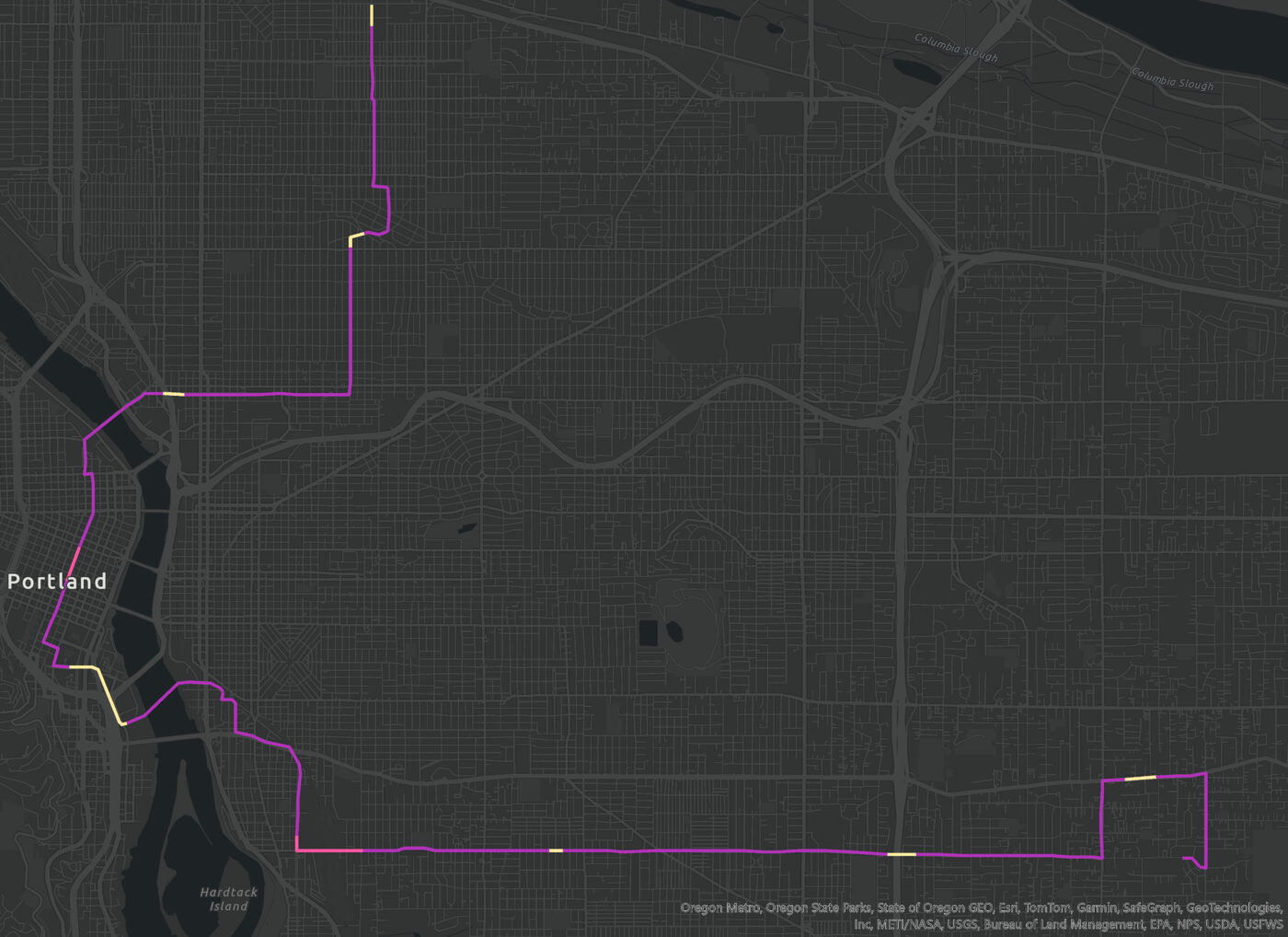

While we’ve focused on weekdays here, I have to give some limited credit for improved Saturday service. Going from 33 buses a day in 2021 to 60 today is great, but current service levels arguably fall short of the Frequent Service designation – with 15 minute headways spanning roughly 9 AM to 5:30 PM. I don’t feel comfortable calling that “most of the day”, even if it is an improvement from prior service levels.
What’s Next?
That’s enough background on the #17, let’s get to the real piece of interest. We are in the middle of a series of planned service changes, and the #17 is a big part of the current batch. The allegedly most controversial is the removal of the service through northeast on 24th/27th (a legacy of the Broadway Line streetcar) but before we talk about that I want to highlight a much more pressing issue: Union Station, the Broadway Bridge, and Lower Albina.
With so many routes on this image – showing both before and after – you could be forgiven for barely noticing the #17 moving away from the Broadway Bridge. There are a whole host of ramifications for this, with the removal of service from Union Station being near the top of the list. As it stands now, just two buses (the #17 and FX2) directly serve the station, along with the MAX Green and Orange/Yellow lines. The #9 could serve the station, as it overlays in the parking lot nearby, but instead you’ll have to walk to Davis. This is a point I have repeatedly brought up to TriMet (every time I have to make that walk), but they have assured me it’s impossible for a bus to manage the complicated maneuvering required to drive around the block.
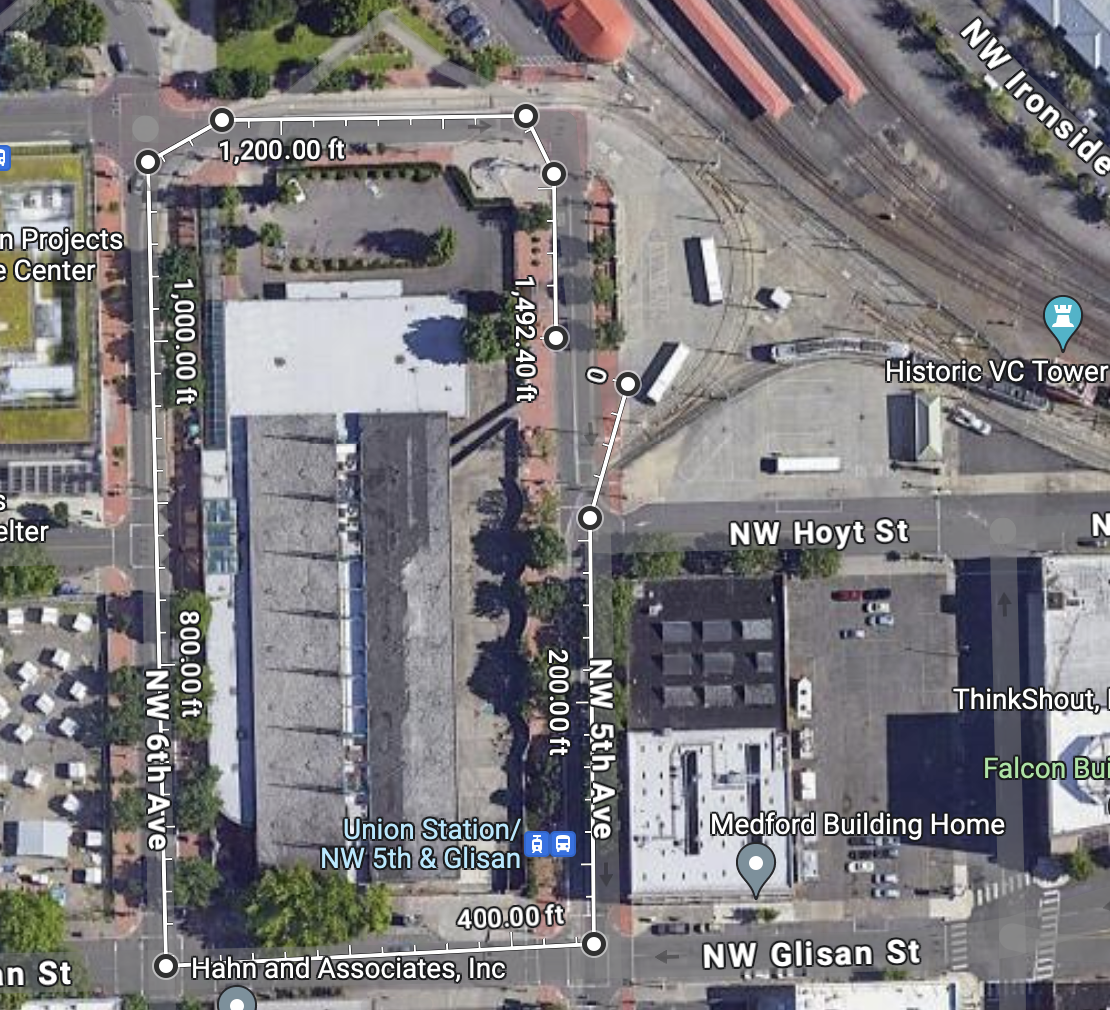
Sorry, this is evidently a sore spot for me. The point is, Union Station is poorly served by TriMet, especially for buses. All Steel Bridge-bound buses present the same issue that the #9 does – a walk to Everett to either get to or leave the station, more than a quarter mile away from the station.
This stop is also is a high ridership stop for the #17, despite getting less than 40 buses a day on a given weekday. At 1.5 riders per bus, it ranks in the top 10% of bus stops in the system, and it also provides access to a litany of social services directly adjacent to Union Station. It’s the only transit route that connects the station directly to NE Portland. All of these are reasons to leave service to the station, and I can’t stress enough how frustrating it is to be a train aficionado and having to beg my public transit agency to serve the train station.

But it’s more than just Union Station that will be affected by removing the #17 from the Broadway Bridge, there are key areas of inner north and northeast Portland that are losing a significant amount of service.
Before we go further, it’s worth expanding on the relationship between ridership and service though. As this chart illustrates, there is a weakly positive relationship between more service and total ridership, with our slope indicating that we would expect another 1.5 riders to board for every extra trip we add after about the 40th trip of the day. This is a very simplistic model, and while an R^2 of 0.43 suggests just a weak correlation, I still think it’s a useful heuristic.
Now let’s get a handle on those areas near the Broadway Bridge and beyond, and what the ridership is in terms of riders boarding per bus on a typical weekday. For places where service is changing, it’s hard to gauge exactly how much service will be lost before schedules are released, but I’d like to give a brief overview of each segment affected. Keep in mind TriMet’s stated justification for moving service to 33rd is low ridership on 24th/27th, and that they have no stated justification for moving service away from the Broadway Bridge.
The first area of focus is the Broadway Bridge area, up to the intersection with the #8 on NE 15th. The light pink line shown (the #77) is being upgraded to Frequent Service and routed north to take over the stops lost by the #17 reroute, but will still cut out a transfer to the #4 at the corners of Broadway, Williams, Vancouver, and Weider (where the red and green lines meet).
The stops on the #17 get about one bus rider boarding per bus, and are adjacent to a low income housing project (Madrona Studios). It’s also worth pointing out that the forthcoming Albina Vision One project at Flint/Hancock is also currently best served by the #17 and that the #17 is the only bus that serves Lower Albina directly (the 4/44 skirt around the I-5 edge).
Let’s take a deeper look into Lower Albina, arguably the neighborhood in the city that has born the most damage from the freeway and urban renewal areas. This excellent piece from City Observatory tells the story better than I can, but given that the Portland Housing Bureau has invested $16 million into the first project by Albina Vision Trust, and transit access is high on the list of positives in the area the choice to move the #17 needs to face extreme scrutiny.
If the future vision of Lower Albina as rendered by Henberry Eddy Architects is to be achieved, surely we ought to be running buses over the Broadway Bridge.
Albina One, the first project in the Vision consists of 94 units, 100% of which are affordable (62 at 60% area median income, 32 at 30%). Marked as a house at N Flint near Hancock, it’s currently less than a quarter mile from the nearest stop on the #17 on Broadway/Weidler (route in blue, stops in orange).
If this change goes through, it will be just over half a mile from the nearest bus serving East Broadway and SE at the Rose Quarter Transit Center (marked in red). Not an unfathomably long walk, but certainly worse than the existing service. Cutting transit service to a landmark affordable housing project needs to have a lot more justification than the nothing that TriMet has provided on this front.
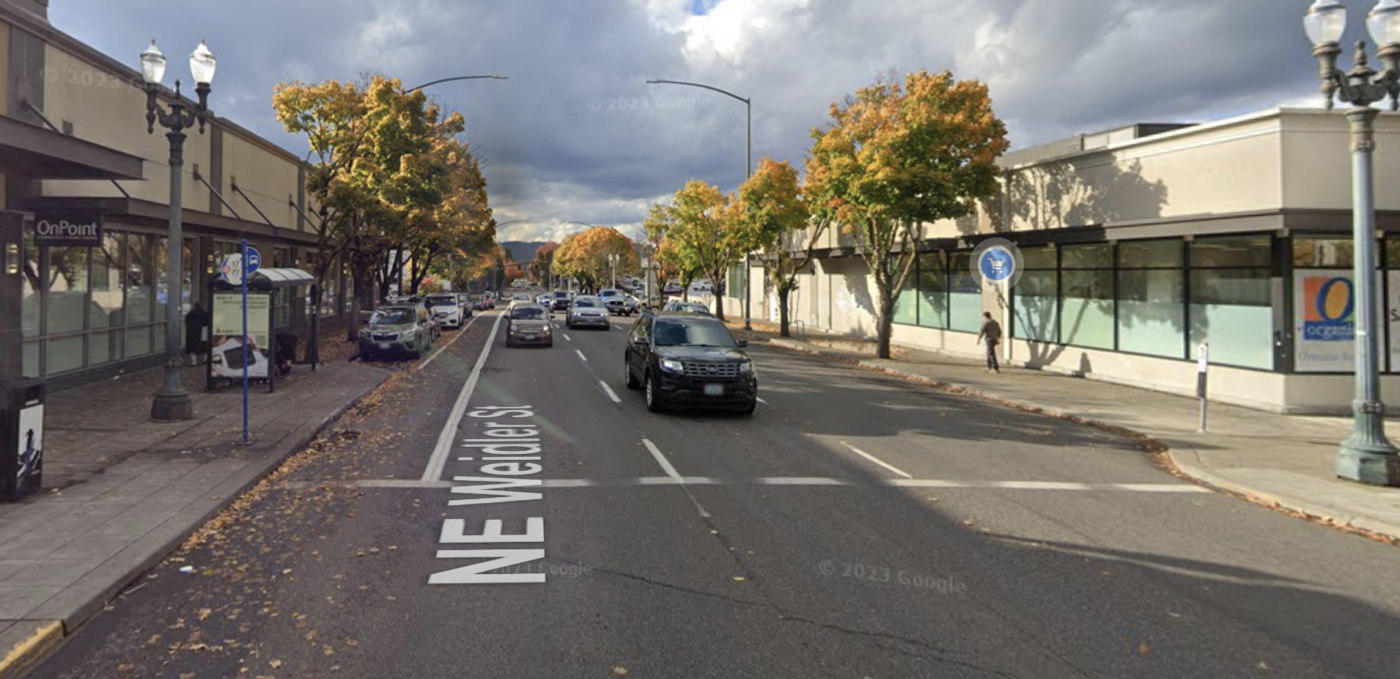
And before we leave the area, let’s look at the busiest stop on Lower Broadway – NE Broadway/Weidler and 12th. Located near the not-dead-yet Lloyd Center mall and at a major grocery store (Safeway), the Weidler stop ranks in the top 3% of busiest bus stops with 10 or more buses per day in terms of riders per bus (at 2.66, it’s 158/5360).
Currently, it gets 76 buses a day on a typical weekday on the #17 and #77. It’s unlikely that Frequent Service on the #77 would see that many buses, and the loss of the #17 will make some trips much less convenient to this area – particularly from downtown. Before Covid service cuts, this stop pair saw about 110 buses/day at each stop.
Further down Broadway, we arrive at 24th and 33rd. Currently, 33rd is served by the “crosstown” #70, which does not go downtown and offers reasonably frequent N/S options in inner east Portland on 11th and 12th (even if the span of service is bad). The on 33rd here see significantly more ridership, likely due to the presence of Grant High School.
But given the different utility that the #17 and #70 serve (downtown vs. crosstown), there are other confounding factors as to why 33rd gets more ridership than 24th.
Further north, near Killingsworth we see a more balanced ridership split between 27th and 33rd. Near 33rd and Killingsworth, there is a strong neighborhood commercial center with a grocery store, pharmacy, and a transfer to the #72 – TriMet’s busiest route.
The transfer to the #72 on Alberta/27th gets relatively less ridership, though at about one rider boarding per bus, that still puts it in the top 17% of stops on the bus network.
So is 33rd or 24th/27th busier? In absolute terms, it’s 33rd. More buses means more ridership after all. But in terms of riders per bus, it’s not exactly conclusive. 33rd gets more riders per bus at the high and medium range, but 24th/27th gets more at the low end. I don’t think a ridership distribution like this merits being called “low ridership”.
If NE 24th/27th are considered to be low enough ridership to justify a cut, there are thirty-five bus routes with fewer median riders boarding per stop. The astute of you may notice that the #70 is one of those buses! Some of these routes have been on the chopping block for years, but others are generally considered to be routes worth increasing service on.
The 35 in particular stands out to me. Highlighted in yellow, it serves Lake Oswego, Oregon City, and North Portland and a cut to a core route like this would generally be unthinkable. It isn’t the biggest ridership draw, and it doesn’t serve parts of the region generally thought of as equity focuses.
But still, it was singled out as a potential for an upgrade to Frequent Service in the original Forward Together service plan. I think that’s great, more buses are always welcome, but it also serves as a reminder to the political nature of service changes.
Upgrading a lower ridership line that serves rich suburban parts of the region to ameliorate concerns relating to tolling I-205 while cutting service to wealthy parts of inner Portland is just serving suburban interests at the expense of urban ones. While I (theoretically) understand that TriMet serves both urban and suburban Portland, public transit is more fiscally and socially sustainable in dense urban environments.
I want to be clear that I’m not against this upgrade to the #35. I’ve ridden the bus before and waiting for 20 minutes at the Lake O transit center was not fun. But given the current austerity as well as TriMet’s equity goals, the changes really stand out as strange.
This is a Service Cut
Inner NE Portland is facing a service cut, and the entire construction of the new bus network isn’t great. Lower Broadway will likely go from 75+ buses on a weekday, roughly evenly split between downtown and NW services to likely less than 70 buses per weekday, all NW bound. Not to mention that section of lower Broadway got 110 buses a day in 2021 – that’s a total cut of 36%. Multnomah and 33rd will have worse mid-day service, with TriMet only committing to 15 minute service in peak hours on the new #17, which is probably only going to be slightly more frequent in terms of overall service than service existing on the #70. 24th/27th is losing service altogether, and we are looking at having just one bus serve the most important intercity rail station in the state.
Despite this, there is little evidence on the proposal that the net result of this is less service with fewer travel options. It reads as minor changes, or little tweaks to service – in reality, it’s probably close to a 20% cut in service hours to inner NE – and that’s on top of cuts that have already happened like the earlier changes to the #17.
Reading the TriMet code, I feel that the descriptions of these changes are close to running up against the requirement for describing the changes. I’m not trying to be hyperbolic, but it’s alarming that service is being cut substantially – especially from lower Broadway – and the only text mentioning a change of service is how the #77 will “move to NE MLK/Grand to serve more of the Broadway-Weidler corridor”. I don’t doubt that TriMet’s notice has met their own rules and regulations, but I question if they are meeting the spirit.
Although I will point out that the cut to NE 24th/27th, and the move to the Steel Bridge constitutes 32% of the route-miles on the #17, and TriMet is required to provide a hearing when there is a change that constitutes 25% or more of the route-miles of a given transit route. Clearly, this public engagement process is the manner in which they are doing this but is a header describing “Route Changes”, with text about discontinued service on a web forum enough? Surely the TriMet legal team thinks so, and I’m not trying to make the case that they are outside the legal expectation. Rather, I think they are outside the public expectation – especially considering that former bus route changes specifically listed service cuts (you can view these at your leisure, archived here ).
When it comes down to it, I can’t in good faith support the decision as it stands now to end service on NE 24th/27th, and I can’t sit idly by and watch as Union Station bus service continues to be cut to oblivion. I understand that TriMet is on shaky ground with the public now, but I don’t feel that the current trends are doing much to improve their standing. Moving the #17 from the Broadway Bridge to the Steel Bridge is such a minor change, but it cuts service for Union Station, at least one affordable housing apartment complex, and threatens the future of useful transit in Lower Albina. That is a big deal, and it needs to be taken seriously.
Don’t Mourn, Organize
It’s late in the comment period, but there are still public meetings going on until this Thursday, February 1st and online comments are accepted through February 11th. Make your voice heard! If you find all of these changes to just one bus route to be dizzying, imagine the ramifications of the bus that may be changing in your neighborhood. TriMet does mostly good work, but they are not immune to poor decisions and it’s your job as a member of the public to understand exactly what they mean when they change schedules.
This entire post has been an exercise in falling down a rabbit hole, and I wouldn’t have even noticed the loss of service to Lower Albina if I hadn’t been concerned about the loss of service to Union Station. Small route changes can have big negative impacts, and your voice matters in preventing them. Leave a comment while there’s still a chance to, and show up in person to make your voice heard. I’ll be at 70 NW Couch St, Rooms 142/144 on February 1st between 12:00 and 2:00 pm. I hope to see you there.
Data, Code, and More
- Python and R code to create data for maps, parse ridership information, and more is in this github repo
- Ridership data from TriMet is from this .pdf
- GTFS data was downloaded from this site that logs historic transit feeds
- You can see the Excel Workbook that I made charts from and did calculations in here if you really want
- Maps were created in ArcGIS Online, licensed through Portland State
Further Reading
- My personal blog!
- Full TriMet Forward Together plan can be found here.
Pieces from City Observatory on Albina are below





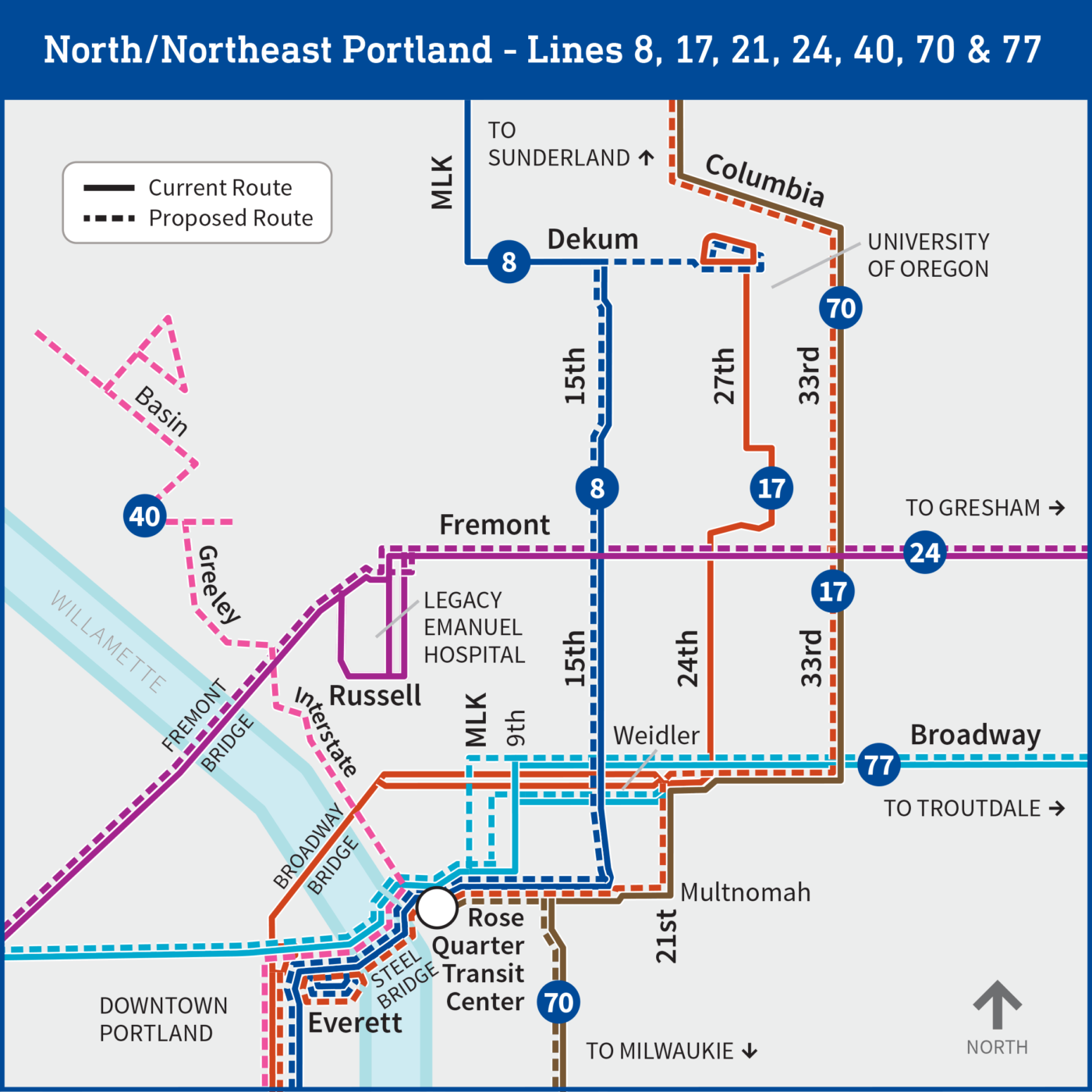
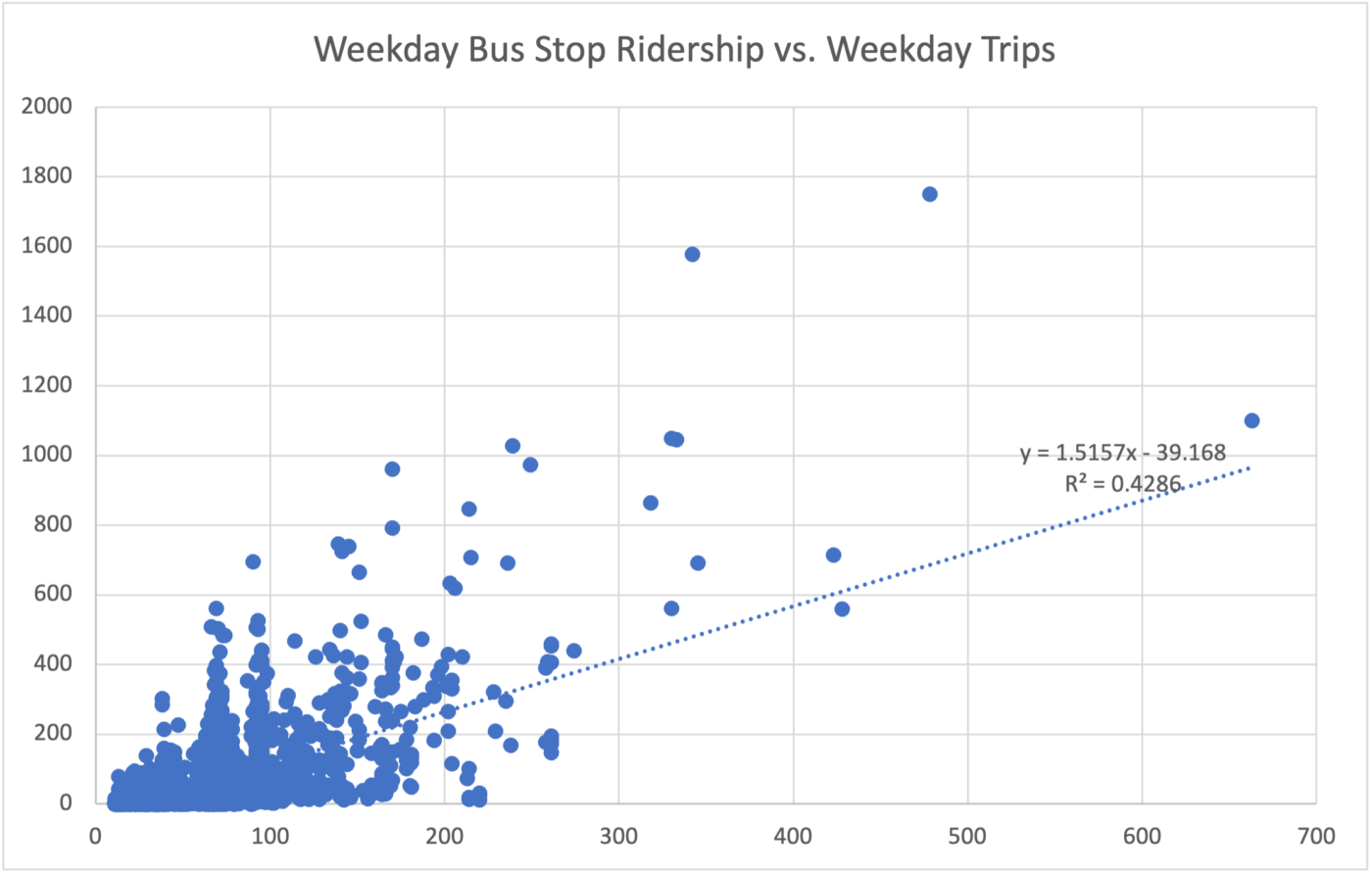

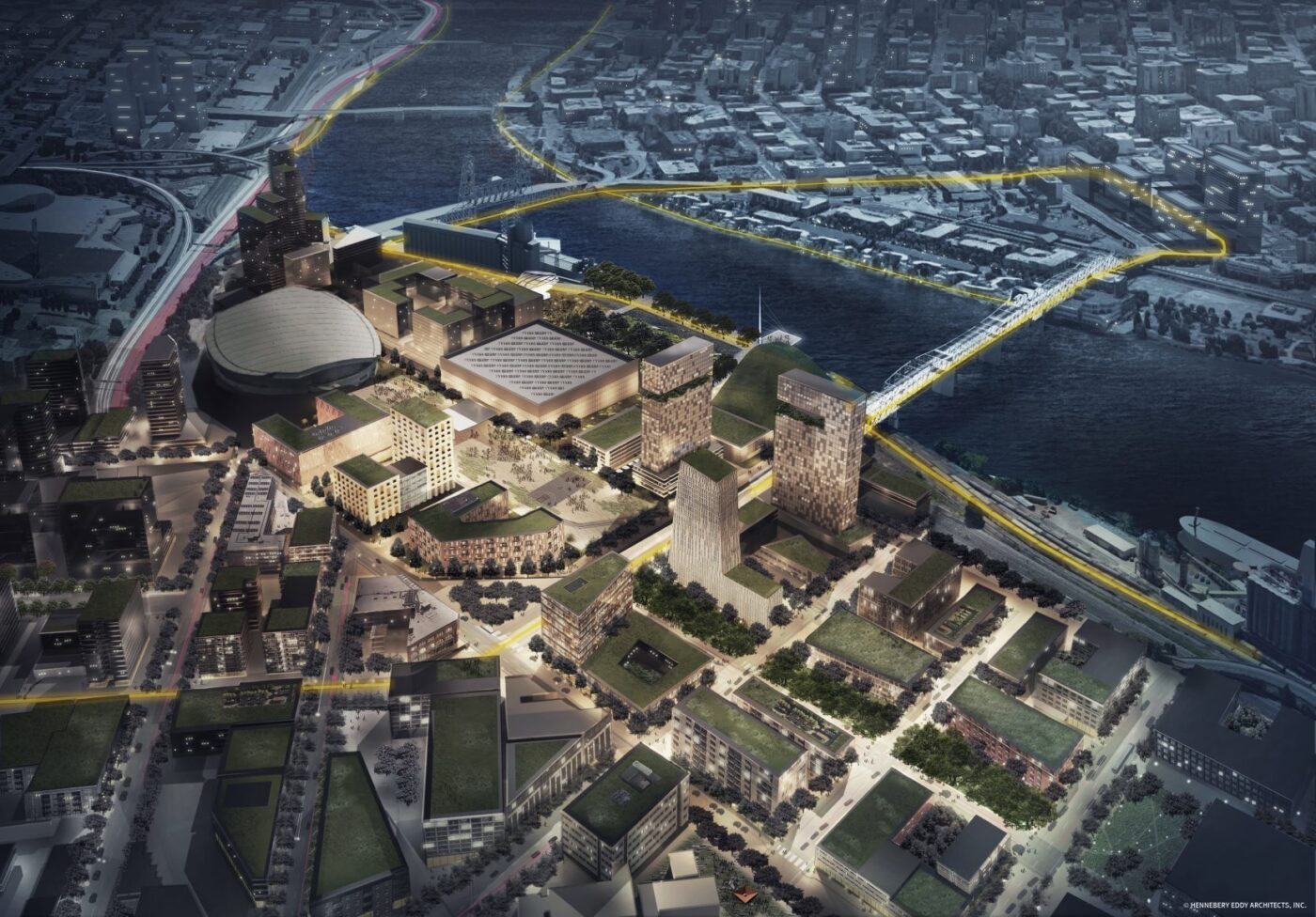
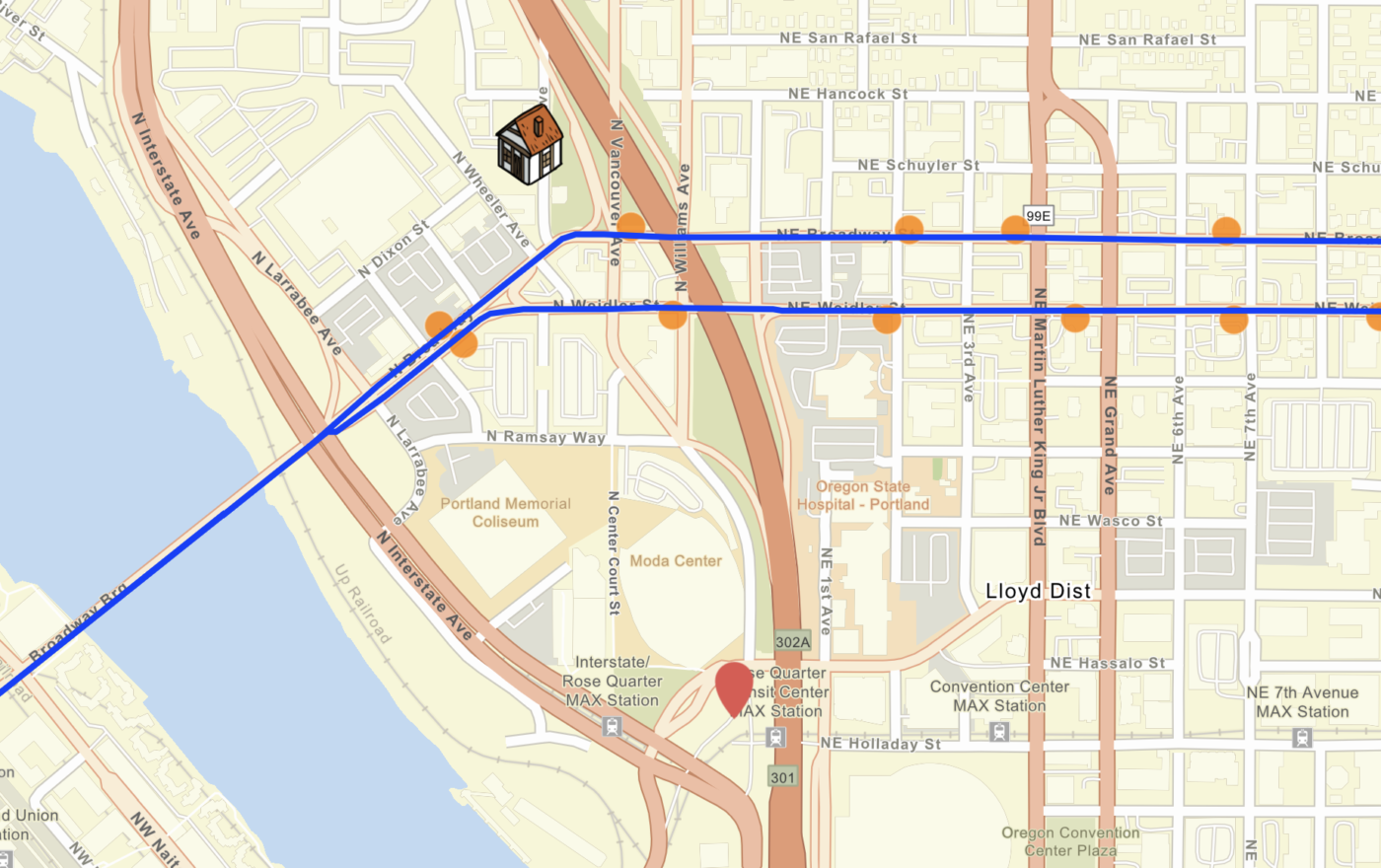
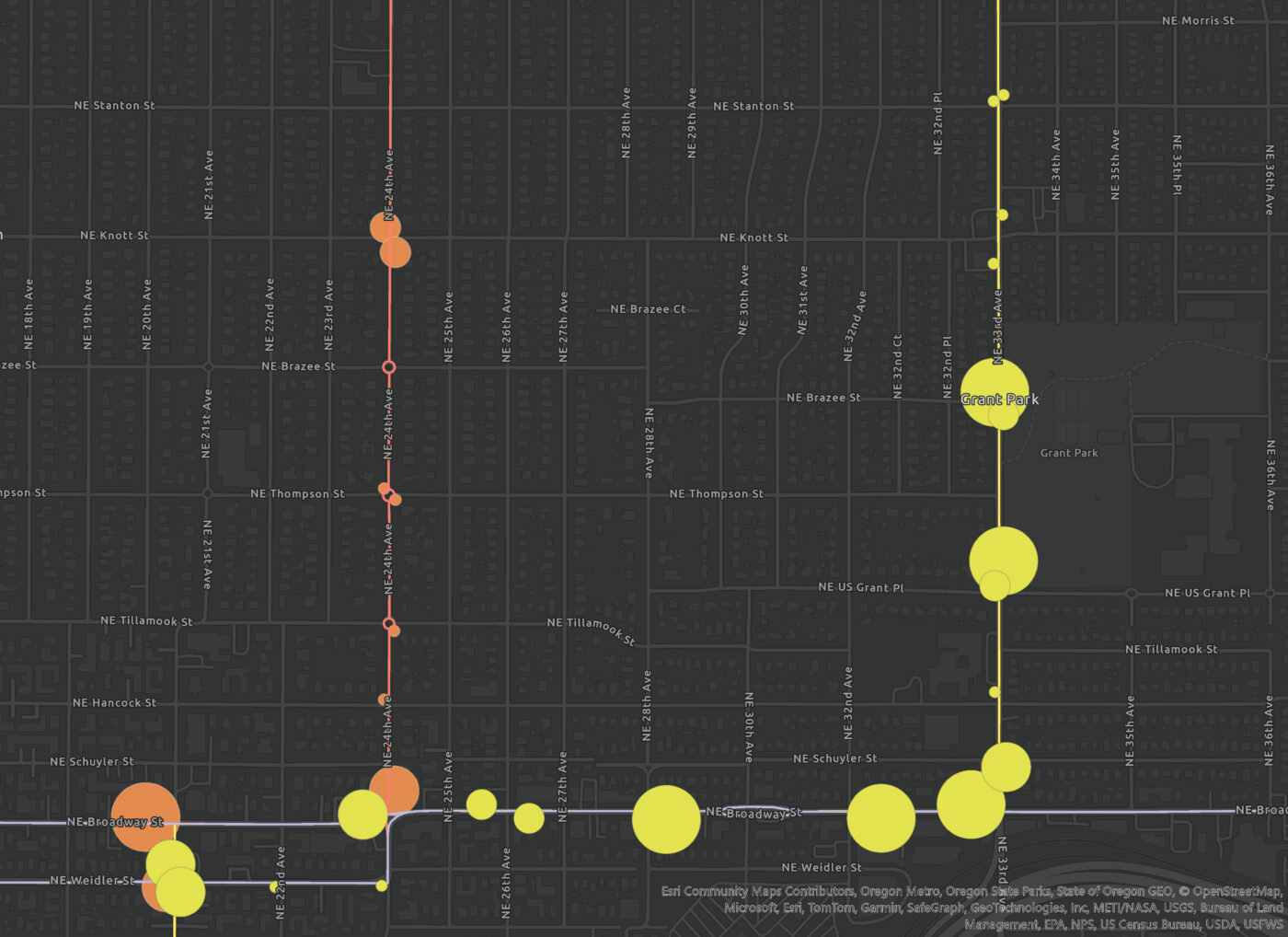


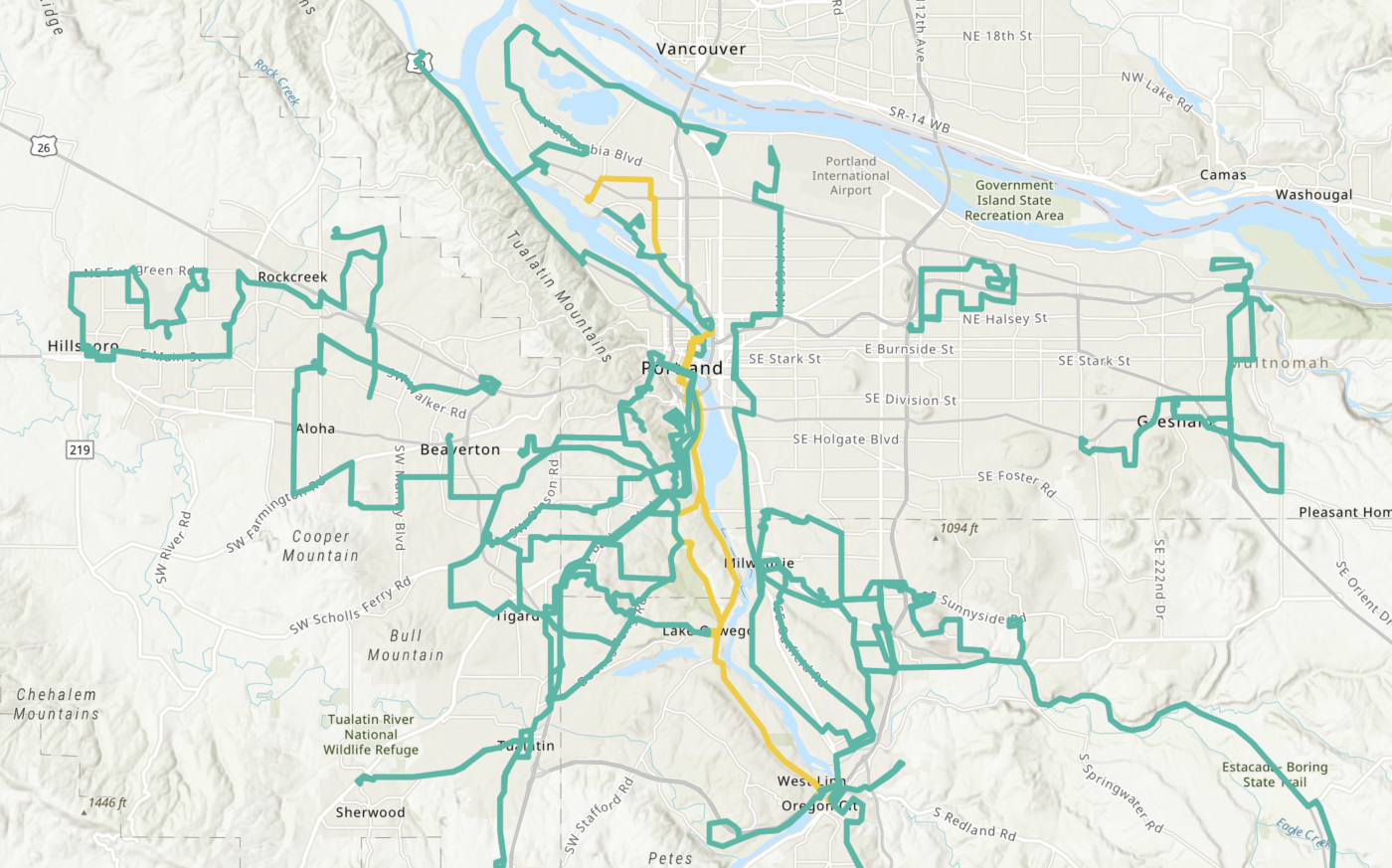

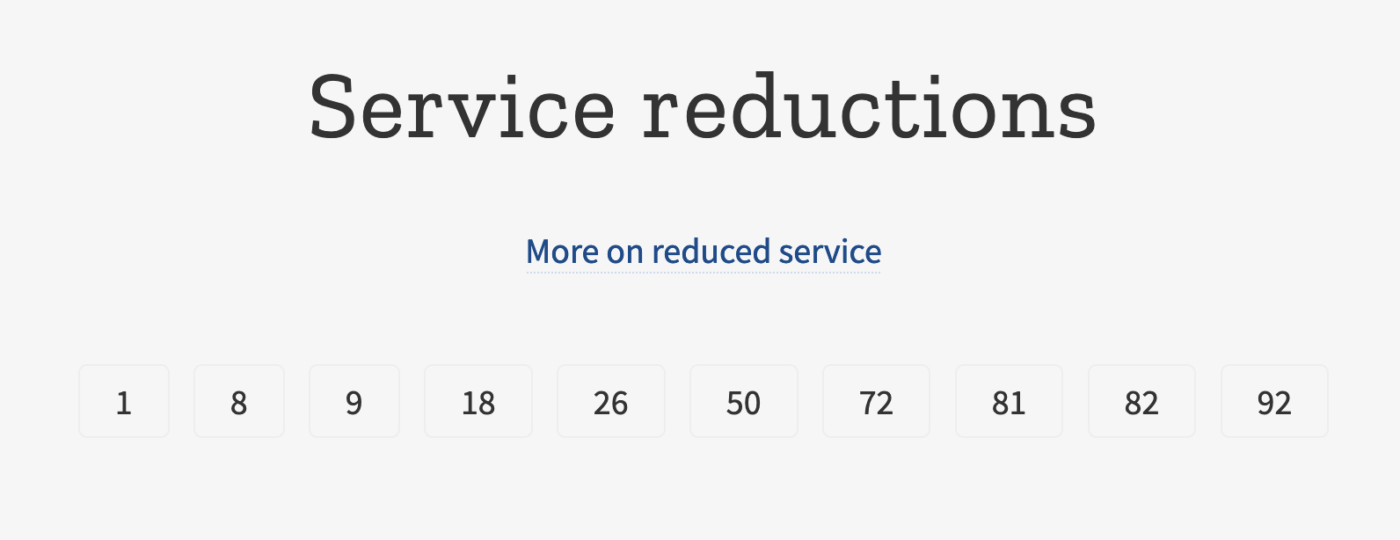
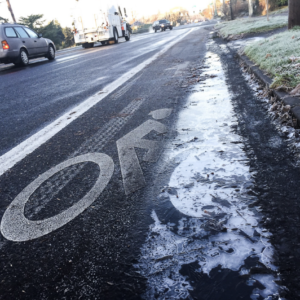

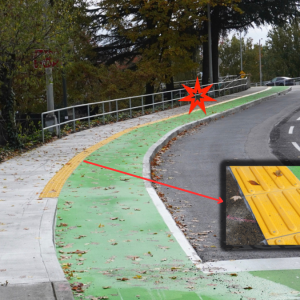

Thanks for reading.
BikePortland has served this community with independent community journalism since 2005. We rely on subscriptions from readers like you to survive. Your financial support is vital in keeping this valuable resource alive and well.
Please subscribe today to strengthen and expand our work.
a frustration I have that is not listed above is that there is a major hole in the central eastside N/S bus routes, which will be exacerbated by the 17 bus change. And generally the little east side downtowns are very difficult to get between on the bus routes, but this is where I imagine a lot of people want to go.
Definitely, I tried to touch on that in the bit about service cuts but the #70 being truncated to the Rose Quarter really makes N/S travel in the 10s to 30s in inner Eastside much worse. The net result of moving 17 to 33rd while cutting the 70 there is very bad for crosstown service, particularly in lower NE between MLK and 42nd
I just want the 6 to go further south instead of going downtown.
Is the East Portland (Holgate) section getting better service levels in the 17, where there’s more poverty and greater racial diversity?
yes, but the service levels even on the south end of the 17 are arguably not an improvement over the 2021 service when it wasn’t designated as “frequent service”
The “frequent service” designation is so that TriMet can get special new funding from the feds. They are doing the same thing here in Greensboro NC and most other US cities. In most of the world, “frequent” is every 2 or 3 minutes, but in the USA and for federal purposes it’s every 15 minutes (or in some cases every 30 minutes), with “high frequency” being every 7 minutes.
There is a meaningful difference between “frequent service” as defined by the FTA and how TriMet brands their own Frequent Service lines. If they say “service every 15 minutes or less, most of the day, every day” and then provide service that barely meets the loosest definition of that, the transit riding public is going to be frustrated. Especially given how bad some lines have it on weekends. Frequent service on the 17-Holgate on weekends spans like 9:30 am to 7 pm, is that really “most of the day”?
And if the answer TriMet cares about is the FTA’s and not the transit riding public of the Tri County Metropolitan Transit District of Oregon, then they’ve lost the plot. TriMet does not exist to get grants from the FTA, it exists to provide quality transit service to me and my fellow riders in the area
I believe that TriMet’s true priority is to chase grants wherever they can, with a secondary goal of transporting people. Unfortunately, those two things don’t always align properly.
A shame I can only “thumbs up” this once.
It can be well argued that the MAX lines themselves are a side effect of obtaining the money to put in the MAX lines (with financial goodies for everyone involved except for the passengers). Chasing grants is why TriMet can only build out and not actually improve service, the entire model is built on building revenue for the few rather than provide service to the many. Think how affordable the I5 bridge would be without the ridiculous MAX line running into Vancouver.
When the MAX was first funded, it was part of a national program to expand freeways – major cities were given a choice to expand freeways with the feds paying 90% or to build or expand mass transit more or less for free. Portland, Sacramento, and Salt Lake City all chose transit – Seattle like most cities chose freeways.
Thats very interesting. I guess accepting the money was easier than designing a system that actually worked well. It seems to work pretty well in SLC and I haven’t been to Sacramento to experience their system. What is your opinion on the way MAX’s expansion is being handled in current times? Is constant expansion sustainable? Is there any money to repair or enhance what is already here or is the only money in the form of grants that require expansion that will be unfunded once the line is complete?
It’s not really money coming from the feds as much as it is a series of cents-off coupons, to get a discount on a cool new piece of infrastructure, whether it’s needed or not. In general Federal grants are only for expansion and replacement but not so much for maintenance – it’s often more cost-effective to let a bus, a MAX trainset, or the whole system to go kaput than to incrementally repair it as needed. Most communities go for these coupons or grants because they can do a lot on the short-term on hiring staff, expanding their petty bureaucratic empires, and getting people re-elected – but long-term, IMO, these programs are a detriment to our society as a whole, as we become increasingly dependent (and addicted) on federal grants for stuff we might not actually need or even want – freeways, armored cars for police, security cameras on transit – and of course we never have enough money to pay for their maintenance or later disposal. And no, it’s clearly not sustainable, but like heroin and caffeine, once you get addicted to federal grants, it’s really hard to get off of them – for one thing, it takes 30 years to pay off the bonds for the money you borrowed to build the initial infrastructure, and for another, half your city workers’ jobs depend on continued never-ending federal funding for this and that. And so while it’s not sustainable, you have no choice really but to keep doing it.
I’ve been so “the glass isn’t even half full” with Trimet for so long I was beginning to wonder if it was just me being overly negative. Glad to know it might not be me and just might actually be them.
I do enjoy your excellent comparison of grants to the 1033 program which may have started innocently (doubtful, but possible) and segued into a genius plan for the Pentagon to get rid of their very specialized and now very useless and expensive junk.
https://www.strongtowns.org/journal/2020/8/2/the-high-cost-of-free-mraps
https://www.aclu.org/news/criminal-law-reform/federal-militarization-of-law-enforcement-must-end
Uh, not affordable at all. The major costs for the IBR are still the bridge and the miles of freeway widening and interchange reconstruction.
I agree with you on that. Is there a quote for just the bridge replacement floating around without all the extras such as MAX and the not so well hidden freeway/interchange expansions?
$1.64 – $2.45 billion for the low bridge option.
Thank you! Sounds much more possible than the current amount of……9 billion I think it is now?
Those estimates are from before the current cost escalation. So more like $1.96-$2.94 billion.
Looking at the schedules you’ve listed between 2021 and 2024, there is a definite 5 minute improvement on the East Portland side at 134th and Holgate, all day, especially in the late mornings and afternoons, so your statement above is false – there’s been a huge upgrade on the East Portland portion of the route.
What’s at issue is that TriMet has met federal mandates to make their service equitable throughout the system, and people who live in richer areas with somewhat lowered service levels are now bitching about it. This is what equity looks like – service is the same throughout the system – so get over it.
TriMet is in fact dependent upon federal funding for capital projects, new buses, and even operational costs, just like any other public transit service – and they exist to serve the public, including poor BIPOC populations, the disabled, and even bicycle riders.
It’s not really a 5 minute service improvement all day, it’s rearranging the schedule to move rush hour trips to the mid morning and afternoon. Rush hour buses to OHSU (where there is less WFH) can be packed liked sardine cans, and the net daily result is still the same number of buses in a day. I just don’t think that really meets the spirit of a service upgrade, and it certainly is not huge. There is much worse service for a nurse commuting to work at OHSU from Holgate/122nd, a trip that is pretty important for TriMet to be able to serve. Connecting the largest employer in the city with some pockets of affordability in East Portland matters a lot.
Dismissing service cuts to parts of the city that have literally always had public transportation service – that were built around the terminus of the Broadway Streetcar line – as “people living in richer areas bitching” is demeaning and unfair. Is the well-used stop at 12th and Broadway that will have seen more than a 30% reduction in service a rich part of town? Are the outer stretches of Concordia at Ainsworth and 33rd a rich part of town? The solution to providing equitable service throughout the region is not to cut service down to the bone everywhere, it’s to provide better service in parts of the region that have been undeserved.
Evidently, that would take more operational funding to accomplish which would mean more local taxes. That’s something that TriMet can and should aggressively pursue – rather than big ticket capital projects like the SW corridor. Every big project having a eye towards getting federal grants is not a good way to build a transit system that is fiscally sustainable at the local/regional level. If TriMet spends all of its planning efforts to chase federal grants, who is left to plan for regional tax policy that makes higher levels of service possible?
TriMet exists to provide public transportation to the Tri-County region – everyone in the region. Every time they cut service there needs to be a lot of scrutiny relating to their claims of why, and I don’t think “low ridership” is enough to justify the change on 24th/27th, but there are more pressing pieces to take away from this. I don’t think it’s appropriate for TriMet to cut service to large parts of inner Portland with functionally no warning – as they are doing on Broadway between the river and 21st.
Blumdrew, you wrote:
There is a report showing what percentage of employees several of the larger employers had working from home, OHSU’s percentage was high. A big percentage of OHSU employees are administrators, they work from home. I wrote a whole article about this complete with photos of empty buses. Jarret Walker addressed it. They’ve got data on all of this.
The value that Portlanders say they put on equity was an input constraint, Walker and associates designed a system which respects that and takes into account where people live and work.
That’s rush hour service on the 66-type buses, which I think is fairly different than the 17. Though yes, there is all day demand for non-admin workers at OHSU I am under the impression that rush hour commuting is still a big deal on the 17 (it’s always packed when I’m on it at rush hour, with 5 to 10 boardings at OHSU being typical). Sure, that’s anecdotal but TriMet doesn’t release boardings by stop by time/bus so it’s difficult for me to go off anything else
I think it’s misleading to call a service change which does not add any buses over the course of a day an upgrade, and I’ll stand by that. The 17-Holgate is busy, and deserves better service especially in the evenings and frequent service should mean something beyond technicalities
The 60-series lines to Marquam Hill have all been discontinued
Yes – those are just the buses referenced in what Lisa was mentioning and I think there is a meaningful distinction between rush hour commuting on a bus like that (which only serves the hill at OHSU) and something like the 17, which serves OHSU, PSU, and all of downtown
Is it possible that TriMet is trying to improve service in the poorest BIPOC sections of town while decreasing service levels in the richer recently-gentrified parts of town?
17 Holgate is an almost totally separate service from 17 Broadway – how many riders go from one end to another per day? Most transfer or get off near or in downtown, do they not?
Or are you advocating for a regressive service policy of not helping the poorest districts, but instead preserve the status quo of good bus service in the wealthiest parts of the city, given limited (and shrinking) resources?
I personally ride from the Holgate leg to the Broadway leg here and there, though usually Union Station is as far north as I go, but the addition of the reduction of the 70 on 33rd means I will be doing that 15 minute slower ride much more often. My original issue with this plan is removing access to Union Station (an important regional destination) with no warning or motivation noted. It’s a significant change to cut service to there, as well as the low income housing existing and in process on Broadway between I5 and the river.
Concerning 24th/27th, it was an investigation of if TriMets claims of low ridership held up to my smell test, and I don’t really think they do – at least not compared to 33rd. I’m not really questioning TriMets motivation per se, but I do think the context of the 35 being floated for higher service and having lower ridership per bus than 24th/27th on the 17 matters.
Cutting service to Irvington is bad, everyone in the city deserves to have good bus service. This is not presented as “the best of bad choices”, it’s being presented as an inevitability of low ridership on a segment. But I think the bulk of my concern comes from cuts to Union Station, lower Albina, and lower E Broadway and again, TriMet doesn’t have any stated reasoning for moving the 17 to the Steel Bridge
David, you are on to something. I don’t have the time right now to delve in again to the Forward Together system redesign. I’ve written three or four articles about it already. But looking at individual lines outside the context of TriMet’s overall goals is like taking a magnifying glass to a tree trunk, and missing the forest, and the concept of forest management.
Accompanying the Forward Together roll-out there has been an enormous amount of information, reports, maps and public communication, explaining why they made the decisions they did. You might disagree with it, but it makes for interesting and informative reading. These changes are thoughtful, and supported by stacks of research.
I’ve found the overall plan to be lacking in detail at the level I was hoping for. They did not mention moving the 17 over the Steel Bridge – I would have made a much louder stink about this earlier had I noticed a while ago. I also take issue with a few statements buried in the report like
This might be technically true, but only in the context of temporary operator shortage cuts to the 17 and 77 when the plan was announced. In 2021, the 17 and 77 both had 20 minute service on Broadway, and if the schedules were coordinated it would have meant a max of a 10 minute wait. Plus, they serve different parts of the city so it’s a moot point. The plan as is will mean better service between Broadway and NW and far NE, but worse service between Broadway and inner NE, and Broadway and SE. Upgrading the 77 is great – and absolutely necessary, but it shouldn’t be used as a justification to cut service elsewhere.
I’ll say that a close inspection of the service maps does show the change on the 17 from the Broadway to Steel Bridge – but there is no text about that! It’s a meaningful change, especially for the train traveling public, for people who live (or will live) in Lower Albina, and for people who access jobs, shopping, and other services on the Broadway side of Lloyd Center.
1998 schedules if you’re interested
https://flickr.com/photos/jmchuff/5128141184/in/album-72157625146300179/
https://flickr.com/photos/jmchuff/5128142134/in/album-72157625146300179/
Thanks Jason, your blog is a personal favorite of mine! If we could get bus service approaching 1998 levels id be a happy camper
Kuddos to Andrew Lindstrom for this article. Really thoughtful and fun to read.
Thanks Sam, glad you liked it!
The triangle at Dekum and 27th is through Dekum Court, a Portland Housing Authority (aka Home Forward) property. It’s being redeveloped from 40 units to 187 units, many as family-friendly multi-bedroom units, with minimal parking. It would seem to me, if we want to support residents of affordable, and deep-affordable housing, we’d keep the 70 AND add the 8.
Yes – definitely agree. The 8 and 70 serve different functions, and the current plan cuts crosstown service to tons of useful locations. I find it frustrating that TriMet acts like any old bus is good enough for an area, just as long as there is service. Where the bus can take you really matters!
I’ve noticed this too, and it is indeed frustrating. Bus service is not fungible.
Glad you brought up the Home Forward project – that alone should boost rider rates on the line not to mention the opening in the Fall of the U of O campus down the block from it. There is going to be a major boost in traffic in the area and I’m not sure TriMet is considering any of that.
A surefire method to improve frequency of bus service is to cut the St. Johns neighborhood out of the loop. This is a method Trimet has frequently employed over the years.
Kudos for the extremely thorough guest article. Makes me wish the old PortlandTransport blog was still around!
As someone very familiar with Line 17 changes (and not necessarily a fan, ESPECIALLY the proposed cut in crosstown service), I find it peculiar that you don’t mention the eastside streetcar loop that runs on Lower Broadway and Broadway Bridge. Whether it’s sufficient enough service for this corridor is an open question, but surely TriMet would cite that service as reason for how the 17 is “duplicative”. Of course the streetcar misses Union Station entirely.
Thanks again for the read.
I didn’t include the streetcar mostly because of funding for service coming from the city and because schedules are (I think) a joint thing between TriMet and the city. It does provide some nice complementary service, especially to the central eastside but given that the areas of the city served are fairly different.
Travel from the river to 21st on Broadway to areas south of the streetcar will be much much worse with the change, and I didn’t feel that there was enough overlap with the 17 to merit a whole discussion about it (given how many other things there were to touch on!). It really is just to MLK/Grand, and to me a lot of the important places to serve are still further east, closer to the Lloyd Center (like 12th/Broadway).
The streetcar is also not particularly great to get to from Union Station.
Not sure the N leg of the 35 deserves to be thrown under the bus like you do. If you are using a criteria for equity, it is the next closest bus line to New Columbia and for anyone travelling by bus downtown it takes 25 minutes versus 45 minutes on the 4. However it has WES-like bias towards commuter hours that needs to change. Maybe drop the LO end and just double and extend the frequency between downtown and N. PDX.
I guess I was mostly referring to the south end of the 35, I agree that the north end is a niche route that offers good service. Well the whole thing offers useful service, but the stated reasoning for service improvements wasn’t to better serve N Portland with a reasonably fast bus to downtown via Greeley, it was to make up for tolling 205.
Don’t me started on the Lift. There communications center is/are TriMets Golden turd. What happened to efficiency and quality.
Hell with the schedule how about Fairless riders being transported all over the city under the influence of intoxicants and endangering all the CUSTOMERS who have PAID for a safe ride . Half the seats are filled with homeless drug addicts who have zero respect for the service they are being given or the people around them !!!! YOU CAN RIDE FREE GIVE IT A TRY IF YOU GET RICH OFF THIS STORY idd like a free pizza hahaha WETHEPEOPLE
Hey man are you ok
The services and the people around them are the reason they’re homeless drug addicts. How much respect should they have for the system that’s continually oppressing them?
Many people here barely have respect for these systems. How much respect would we all have in their situation?
It seems that they lost a lot of ridership because of Concordia College leaving. Now they’re about to get rid of the service right as UO reopens the campus. Why not wait until the college is running fully before deciding that the incoming students should have to walk the extra 6 blocks.
Also remember that they removed several bus stops along Foster to speed up service after the road diet. It seems they don’t really care about 17.
That’s the 14 not the 17, and fewer bus stops in exchange for faster service is fine really (though it does depend). I see a maximum stop spacing of about 500 meters on Foster (from the 52nd stop to Gladstone), which implies a maximum walking distance of 250 meters (800 feet). It’s a trade off, but I think 1/4 mile stop spacing on buses is fine, with the 500 meter spacing on Foster being slightly longer than I’d like but understandable given the awkward intersection dynamics that the diagonal streets tend to create.
If you start out on Foster; most people have to walk a ways before they get there, so the maximum walking distance is in fact much greater.
-Serving 5th and Hoyt from North Terminal would require a bigger loop (via NW 3rd) as the turn from 5th onto Glisan is not legal. In addition, the bus stop is used as a layover for FX buses. But before MAX was through North Terminal and onto the mall, many buses started at the 5th and Hoyt stop.
If I’m going to/from Union Station, I just walk to/from Everett/Glisan. Taking the Green or Yellow Line is also an option.
-Historically, the 77 used NE 3rd between Multnomah and Broadway/Weidler; the Lloyd District requested it be changed to serve more of the office area. Both the Broadway and 33rd Avenue lines went downtown, and the 70 ended at Rose Quarter like is proposed.
-24th/27th is a former streetcar route
-Measuring ridership on current service may not be an accurate picture of demand (differing levels of service and downtown-vs-crosstown destinations may affect things)
TriMet could surely negotiate making the left onto Hoyt legal for buses only, but I also think they could either serve buses at the MAX platform or renegotiate the layover area near Union Station to allow buses to reach the stop without circling the block. I know it’s not overly far, but having to run to Davis to make the last bus for 30 minutes at 10 PM when you can see that the bus could stop earlier is insane, and I’ve had to do that with the 9 more than once
Interesting history about the Lloyd there, that does make sense especially in the office commute days. I’m not certain, but it feels like those offices are much more empty post Covid than downtown.
Definitely agree that current ridership is an imperfect measure of demand, especially given that 24th/27th is downtown while 33rd is crosstown but it’s also the easiest and most applicable data publicly available
The real issues are:
-MAX should have been put on the left side of the mall to allow more flexibility. The downtown business and property owners who decided the layout (in a private “citizens advisory committee”) insisted on having a continuous, all-times auto lane. I would have preferred instead allowing vehicles in the bus lane during evening and weekends (when bus service is lower), and a bike lane between the trees and curb on the left side sidewalk.
-The board of directors is appointed by the governor (and state senate) who don’t necessarily come from the region and have many other issues to deal with, so there’s no accountability.
-There’s no rider’s advisory panel to oversee lower-level issues that aren’t board-level ones.
If the Max was on the left side of the mall, the doors would be on the wrong side of the vehicles.
Sorry, my bad. Doors on both sides. That’s why they announce the side at every stop.
Yes – 100% agree on the MAX on the left side of the mall. The current configuration is painfully slow, and yeah I’ve read the summary of the study used to justify the auto lane and parking on the mall and it’s pretty dubious.
Great background on the accountability and structure though. Im less plugged in on that side of TriMet, but the accountability of the board to local interests seems like it should be a bigger deal
Before MAX orange line was built, the 33 and 99 were among the many buses using the 5th and Hoyt stop. The yellow and green lines had already been built, so no change in terms of the track layout from 2009 to 2106.
What they did was have the buses exit the layover facility just south of the Union Station heating plant. This feeds directly to the stop, without having to circle the block.
There have been no changes to the track layout since 2009, and with the orange line there are far fewer buses laying over in the layover lot. I don’t see why they couldn’t go back to having some buses do that.
Buses require drivers. If Trimet, and Oregonians in general, are serious about staffing our state’s public transit our contracts can’t be continually in decline.
For that to change our strike rights must be reinstated by the legislature AND transit stake holders have to organize in support of transit workers.
Definitely agree Mike, I’d like to help with at least pushing for strike rights do you know of any resources?
Gorsek has sponsored a bill to do that, twice, and it has been ignored in committee both times. He’d be a good place to start as would Kotek’s office(both because she could call for it as a legislative priority & bc she appoints the trimet board)
Very interesting to hear your thoughts on this. I know that TriMet is struggling to hire enough operators and my guess is that is likely part of the pretend upgrades. Since 2020 when they stopped hiring during Covid, they lost a LOT of people and have never been able to get back to the 1500 operators they had prior. Turn over is massive, and they have been lucky to get to 1100 operators since. Also when TriMet got rid of the pension there is really nothing keeping people in the seat for decades like there used to be. I’m sure this has a lot to do with the weak “upgrade” of the 17. TriMet has been recruiting from out of state for a couple years now to try to get operators. Even offering a large signing bonus ain’t enough.
MAX still serves Union Station and you can transfer to MAX at RQ. There is also Portland Streetcar that goes across the Broadway bridge. Sounds like they are just expecting more people to transfer to get where they need to go.
I think it is odd to route more busses across the Steel bridge as well.
To your idea of having the 9 go around the block, NO WAY, you can’t have a bus in the MAX platform at Union Station, blasphemy!
Give em hell! I wish our transit was better for everyone involved but in my opinion TriMet is top heavy too many cooks in the kitchen, this is why it takes years for things to get done, and often not done well.
Don’t even get me started about MAX!
Thanks Alice, yeah the MAX does still serve the area but the 17 serves mostly non MAX parts of town (both on Broadway and Holgate). And the streetcar doesn’t even stop at Union Station, which I think is a shame. A bridge viaduct stop would be cool (and useful).
The operator hiring and retaining is an issue for sure, but it feels like TriMet management should be able to find a way to hire and retain folks. Hoping that can be sorted out, I’ve seen my trains and buses canceled because of operator shortages recently still
Especially because the signing bonus isn’t really a signing bonus at all, but rather a smaller amount added to paychecks for the first couple of years, which looks like a pay cut when it’s fully paid out.
Everything is relative: out in SW Portland, you are lucky to have a bus come every 40-45 minutes – and that’s if one is even running within walking distance of your abode. Sorry but headways of 20-25 minutes sound pretty great to me.
Is that even true? Buses on BHH and Barbur come every 15 minutes, and the 44 has 30 minute service on Capitol. Sure, the 44 ought to get more service but given the geographical/street grid/density related issues I don’t think comparing SW to other parts of the city is always useful.
And bus service shouldn’t be a race to the bottom. 20 minute service is better than 45 minute service, but it’s still not great. Frequency is freedom, and I’ve usually seen 10 to 15 minutes as the threshold for when a headway becomes too long to be attractive to a “typical” person.
Something else to add here is that the section of the 17 along 24th and 27th is largely empty outside of peak commute hours (when it can be standing room only). There is just not enough density along the route to support all day service unfortunately. Again the main bummer about this change is the loss of crosstown service, something that was so heralded when TriMet moved to more of a grid system back in the 80s.
https://humantransit.org/2012/08/portland-the-grid-is-30-thank-a-planner.html
Also, if you recall back in 2012, TriMet tried to cut this section of the route entirely (back when it was still Line 9). It took organized community opposition to make them backtrack on the proposed changes. Maybe it can happen again, hopefully to save the crosstown route if nothing else.
It’s ironic that you post a Jarret Walker link about crosstown service when his firm was the primary consultant for Forward Together. The loss of the crosstown 70 in inner NE is rough, and I think the reroute through Ladd has been pretty bad too (it’s so slow) in SE. It’s frustrating to see a blurb in that article talking about the benefits of frequent crosstown service when inner Portland south of Hawthorne and west of Cesar Chavez doesn’t have that, despite ostensibly being “better for transit” (in terms of density, etc.) than central NE near 42nd.
What Ladd’s needs is a bus that will take folks downtown directly, like the old #10 did. I suspect demand to get to Lloyd Center is pretty minimal, so the #70 doesn’t really help them at all.
Seems worse for everyone.
There are two buses that serve Ladd’s that head downtown – the FX2 and the 14. It’s at most a ten minute walk from any given point in Ladd’s to a stop on one of those buses. Plus the 10 is still on Division, so it’s not like that isn’t still an option too.
The 70 is the innermost crosstown route, and gets high ridership especially around the transfers at Belmont, Burnside, and the MAX. I ride it all the time and never really go to Lloyd Center. Going through Ladd is far slower than it was going down 11th/12th between Powell and Hawthorne, and the natural detour over the railroad was always the Grand/MLK viaducts not 21st.
The FX2 takes a bit of a circuitous route. Maybe that’s fine for some folks. The point is the bus down Ladd doesn’t really serve anyone well. And it certainly doesn’t enhance the street as a bike route, which is more important to me personally.
I agree the viaduct was a (far) better route.
The FX2 route to the Tilikum is annoying, but it does mean it directly serves PSU and OHSU which matters quite a lot. I’m still on the fence about it being moved there. The railroad crossing can really suck, and I hate that they moved the 70 from it at the same time they move the 2 to it. Be consistent at least!
For people who want to go there. Not for those trying to get into the heart of downtown.
This is one of the big problems with fixed-route transit — you have to go where it goes, rather than where you need to go. This kind of works when lots of people are traveling downtown every day, less so when travel patterns are more varied.
The Ladd deviation is disappointing, mostly because I wanted an excuse for PBOT to divert traffic so that Ladd Ave is no longer used as a cut through. Having a bus return to that section makes it much more difficult to imagine any sort of physical infrastructure there in the future.
To be fair though, reliability was pretty poor with the 70 due to the frequent train crossings, and if you were waiting for a northbound bus from Division to Belmont that had just happened to divert due to the train, you were pretty much screwed.
One of the biggest transit infrastructure mistakes in recent Portland history was not making the streetcar viaduct near OMSI a multimodal facility that buses (like FX…), bikes and peds could all use to bypass the busy train crossings.
Yes – 100% agree with the Ladd cut through piece. Plus they could’ve closed the south leg of the intersection to cars and made that 7 corners light better for everyone.
Definitely, I guess since I live south of Powell I didn’t ever really experience the train diversion missing my stop (which is awful). But I think the old train diversion over the Grand/MLK viaducts always made more sense for a long term move given the railroad crossing issues.
And apparently that viaduct needs to be rebuilt very soon, and last I heard they were at least toying with the idea of adding bus access. If I recall, it’s because that whole area is basically built on sawdust from the old mill and there’s some differential settling happening.
The bus probably should have been permanently routed over the viaduct, which would at least made it more predictable.
Another tale of the trimet ridiculous scheduling changes. I was a rider on the 56 line. Now they ended the bus from going downtown and in the process screwed all the riders from Washington Square to downtown Portland. They have made it a joke to try to get downtown and back. Worse they had a great app trip planner/transit tracker and replaced it with the most ridiculous stupid app. I thought this has to be a joke? But no they replaced a great app with the most stupid unfriendly user app I have ever seen and totally got rid of a Great app. Who ever is responsible for this needs to be fired. They have given no reason for this nightmare of a app. Complaint after complaint have fallen on deaf ears. Worse is people have no clue how much easier it was to plan a trip and track your bus. What is going on with these people? They have great drivers and great service but these silky and costly changes over shadow all the great aspects of Trimet
Or how they lie to the public.
Part of the “Better Red” (a project in search of a problem if I ever saw one) was that bus users were going to see improvements at Parkrose TC. “Better bus stops” we are told. What were 9 bus shelters are now 5. Yeah, great math.
“You’ll get a reader board that says when buses are coming!” Nada, nothing.